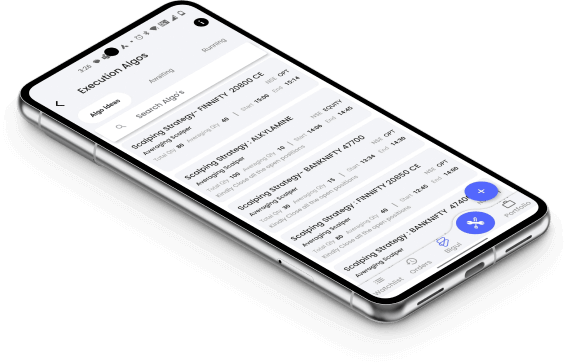1. Understand the Business
The first and foremost step before investing in any IPO is to understand the business of a company. It encompasses comprehending what its products or services are, what industry does it belong to and what exactly it does. It is therefore important to know how they earn their money, their main competitive advantages and where they fit in their industries. This also includes knowing their market position vis-à-vis that of competitors as well as getting an idea about the sector’s overall health and future prospects. If investors truly understood this business; they might choose appropriately based on the potential risks involved as well as expected returns from such investment. Consequently, such knowledge can help explain whether there are chances that this company will grow or make profits.
2. Read the Prospectus
Reading prospectus forms an essential part of evaluating an IPO. When a company goes public, the prospectus which is a legal document must be submitted with securities regulators providing details about such enterprises including financial performance, business model used by the management team and possible risks involved amongst other things. The financial section of the prospectus provides detailed information about the company’s revenue, profits, assets, liabilities and cash flow. The operations section explains how the company works, what products or services it offers and what its current market position is. The management section talks about who leads the company, their experiences in terms of business leadership and how they are involved in their enterprise. The risk factors section outlines potential risks that may affect business activities and financial performance of companies that could deter investors. By doing an in-depth analysis on this particular document investors can fully understand the firm to make informed decisions on whether to invest or not.
3. Company’s Financial Health
Another critical step that companies should take while assessing an IPO is evaluating the financial health of a company. This includes going through its financial statements in details that show how much it has earned, amount of cash flow and various debts. Other key indicators comprise revenue as well as profit margins, operating cash flows, debts and equities levels for example. The ratio of price to earnings can be used to estimate the earnings per share of a company relative to its share price while the ratio between debt and equity reveals how a firm finance itself in terms of operations and growth. The ratio between price and book value shows whether a company is over- or undervalued with respect to its book value, whereas return on equity indicates profitability relative to owner’s capital. A strong financial position could therefore be considered by investors seeking long-term success or stability as they consider investing into an IPO.
4. Growth Potential
Assessing the growth potential of a company is a vital aspect of evaluating an IPO. This involves understanding the size of the market that the company operates in, the company’s expansion possibilities, its target market, potential market penetration, and the strength of its product or service pipeline. Opportunities for growth tend to increase in a larger market size. Expansion possibilities can be new markets or products released. Assessment on the company’s demand for its products and services is based on understanding of the target market. Potential market penetration is about getting more of the market share by the firm. Lastly, a strong product/service pipeline may suggest future growth potential within an organisation. Therefore, it will be worthwhile to comprehend thoroughly about how a firm can expand before its IPO, which can give precedence to its future performance.
5. IPO’s Aim and Objective
Understanding the reasons why a company goes public is vital to when it does. The firm may be seeking capital for such things like expanding its business, introducing new products or venturing into new markets. On the other hand, companies may decide to go public in order to pay off existing debts or provide an exit for early investors. Knowing what the purpose of the IPO is will enable one to have an insight into what is going on at present and in future plans of the company
6. Reputation of Underwriter
In IPOs typically, an underwriter has a respected bank dealing with investments that are very important. They determine the initial offer prices of the stock, manage the IPO process and sell shares to individuals who want to buy them. Therefore, how reputable or disreputable the underwriters are can either make or break an offering by them. A good reputation shows more confidence in the potential of a particular organisation since they have vested interest ensuring success of IPO. Thus, people usually consider this factor when investing in any I.P.Os because it helps them determine whether stocks will increase or not.
7. Lock-Up Period
Following an initial public offering, there is always a predetermined period called lock-up period for major shareholders such as executives and early investors where they are prohibited from selling their shares. This could last anywhere between 90-180 days across companies but not necessarily so. The reason behind having this particular duration is so as to avoid flooding the stock market with many shares which might potentially devalue its price. However once this time elapses those shareholders can dispose off these assets which cause great fluctuations on share price over time. As an investor you need to know this term well since it can also affect price movement of such stocks considerably.
8. Risk Tolerance
Investing in Initial Public Offerings (IPOs) has its own risks and rewards sides; hence it is a high risk-high return investment opportunity. Newly listed companies can be very unpredictable and their performances are usually volatile in the short-term mostly. Thus, before taking part in any IPO, an investor has to analyse his or her goals regarding finances, investment horizon and level of risks that he or she can put up with. This implies that only money which is not significant for maintaining stability should be invested here. Besides, to reduce this danger it’s better to have various investments at once. Be aware that every investment comes with some degree of risks hence sound decisions ought to be made according to individual financial situation and objectives.















